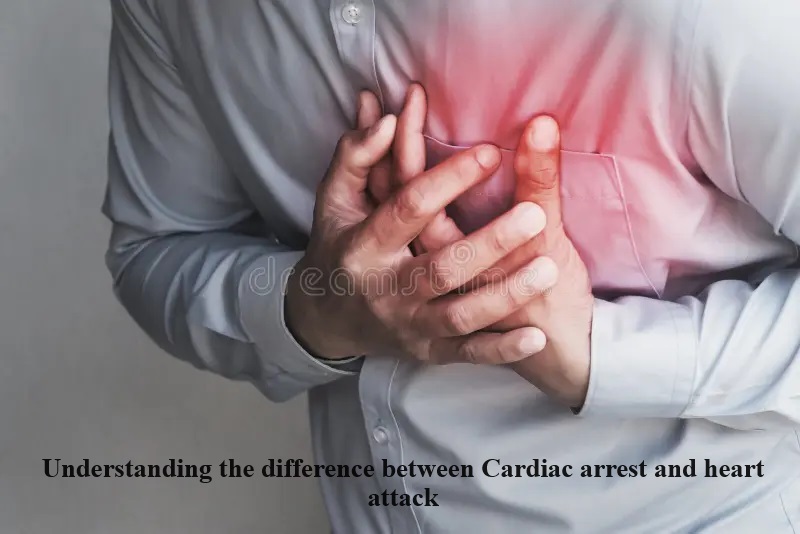
Cardiac arrest and heart attack are two critical medical emergencies affecting the heart, although they differ in causes, symptoms, and treatments. Recognizing these distinctions is crucial for identifying signs and seeking appropriate medical assistance.
Cardiac Arrest:
Definition: Cardiac arrest refers to the sudden cessation of heart function, resulting in a halt of blood flow to the brain and vital organs. It necessitates immediate action to prevent fatality and can occur unexpectedly, even in seemingly healthy individuals.
Causes: The primary cause of cardiac arrest is an electrical malfunction in the heart leading to an irregular heartbeat (arrhythmia). Other triggers include heart attack, drowning, electrocution, and severe electrolyte imbalances.
Symptoms: Key indicators encompass an abrupt loss of responsiveness, absence of normal breathing, or irregular gasping for breath, and the inability to detect a pulse.
Treatment:
Immediate initiation of cardiopulmonary resuscitation (CPR) to sustain blood flow to vital organs until emergency medical assistance arrives.
Possibly administering defibrillation, delivering an electric shock to restore normal heart rhythm.
Hospital-based interventions, including medications and other treatments, to stabilize the heart and prevent future cardiac arrest episodes.
Heart Attack:
Definition: Also termed myocardial infarction, a heart attack occurs when blood flow to a segment of the heart is obstructed, typically by a blood clot, resulting in damage or death of heart muscle tissue. Like cardiac arrest, it demands prompt medical attention.
Causes: Coronary artery disease, characterized by narrowed or blocked arteries due to plaque accumulation, is the leading cause of heart attacks.
Symptoms: Manifestations may include chest pain or discomfort (pressure, squeezing, or fullness), radiating pain in areas such as the arms, back, neck, jaw, or stomach, along with shortness of breath, nausea, lightheadedness, or cold sweats.
Treatment:
Administration of medications, including clot-busting drugs to dissolve the clot and restore blood flow to the heart.
Performance of procedures like angioplasty and stenting to unblock affected arteries.
Adoption of lifestyle modifications such as a healthy diet, regular exercise, and smoking cessation to mitigate the risk of future heart attacks.
In essence, while both cardiac arrest and heart attack affect the heart, they entail distinct conditions necessitating different responses. Cardiac arrest entails an abrupt cessation of heart function requiring immediate restoration, whereas a heart attack arises from blocked blood vessels causing heart muscle damage.

Post Your Comments